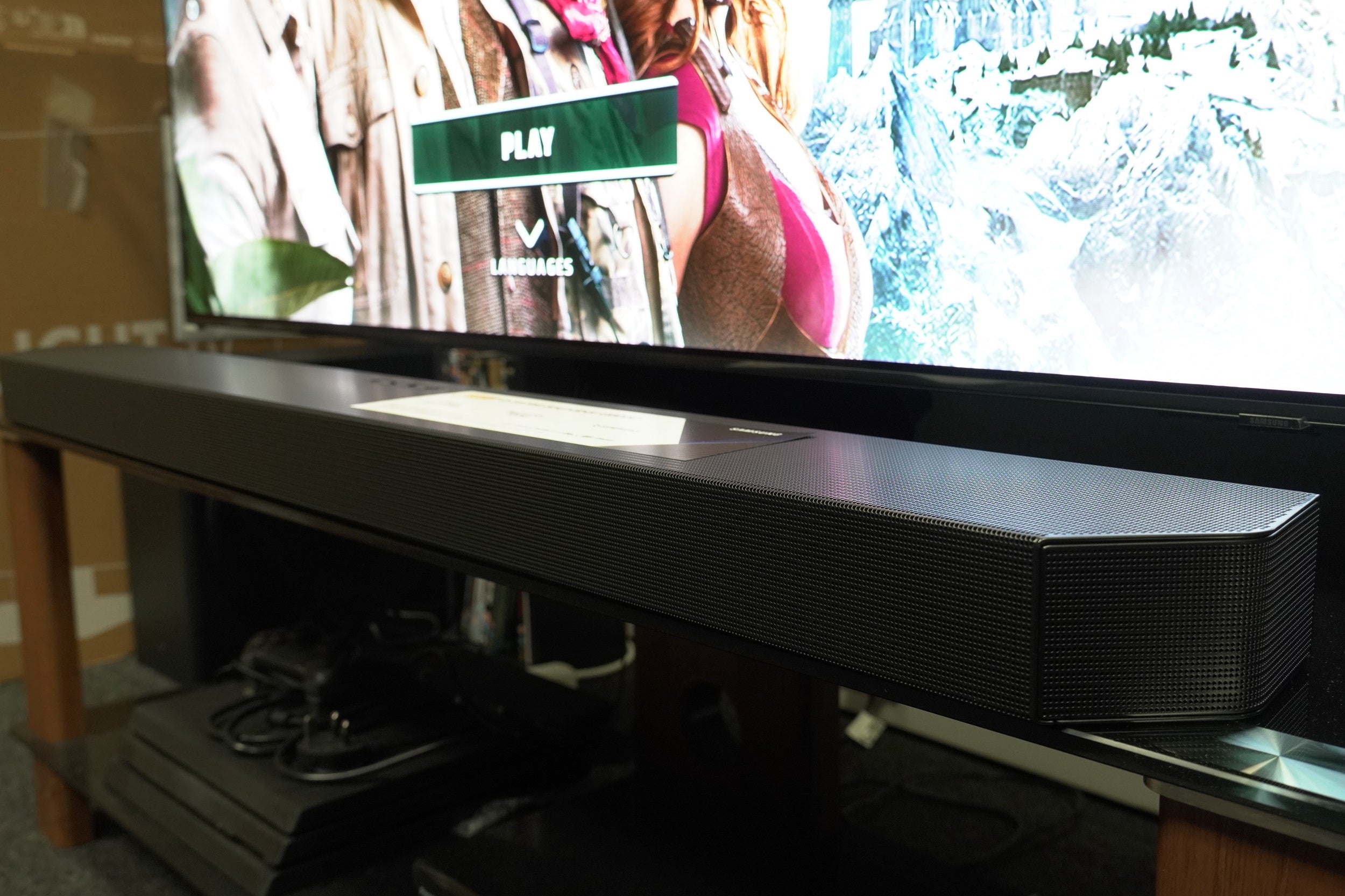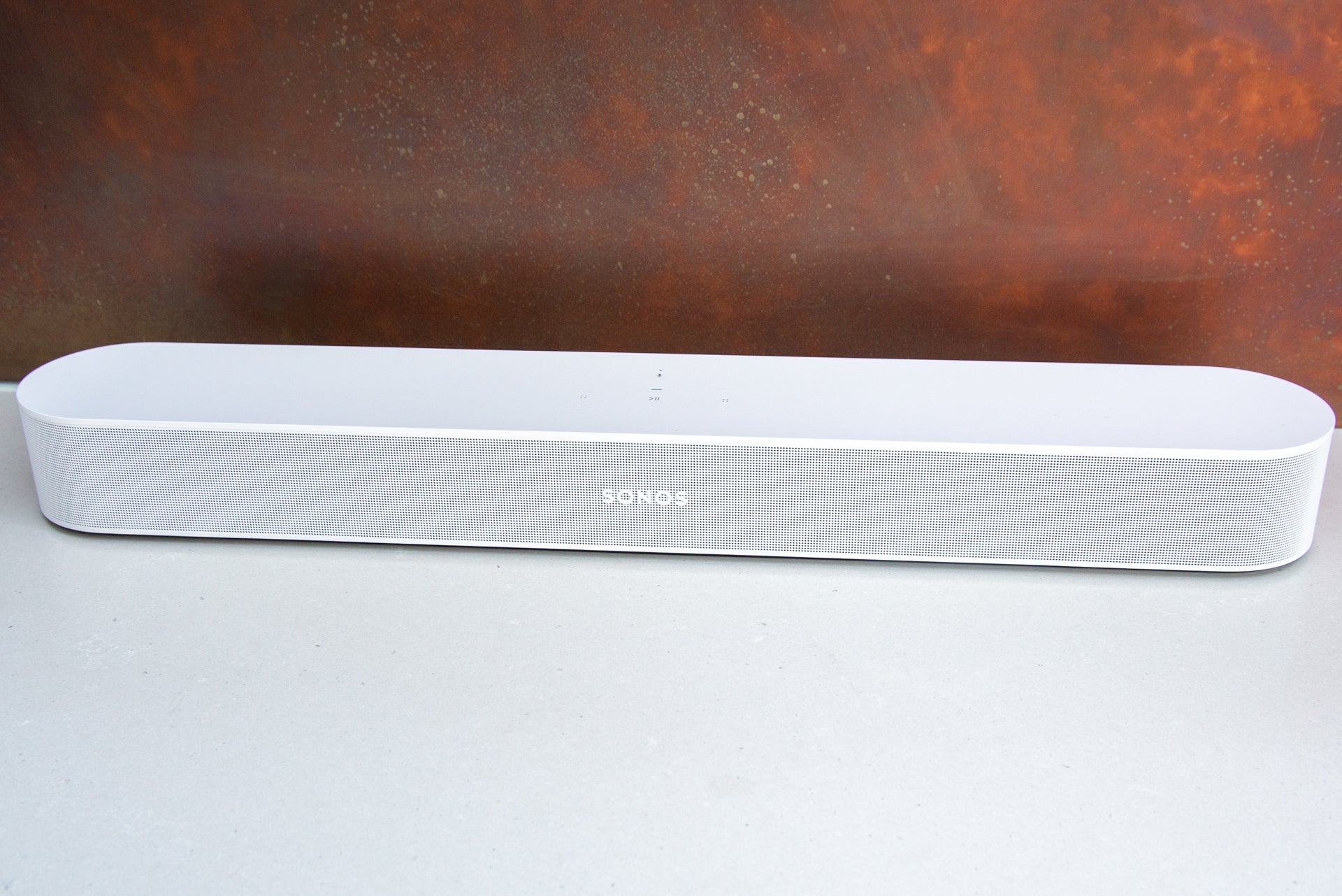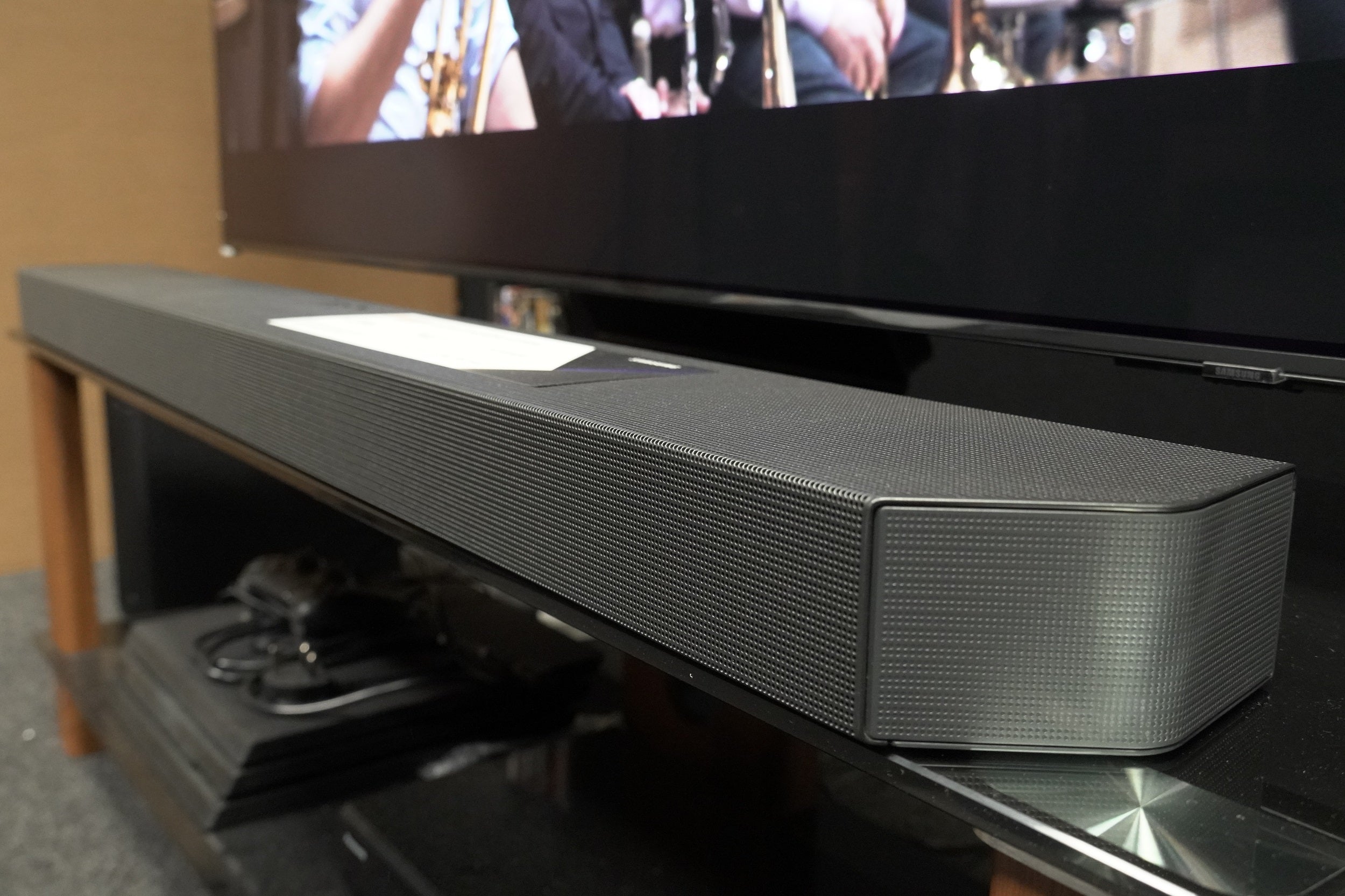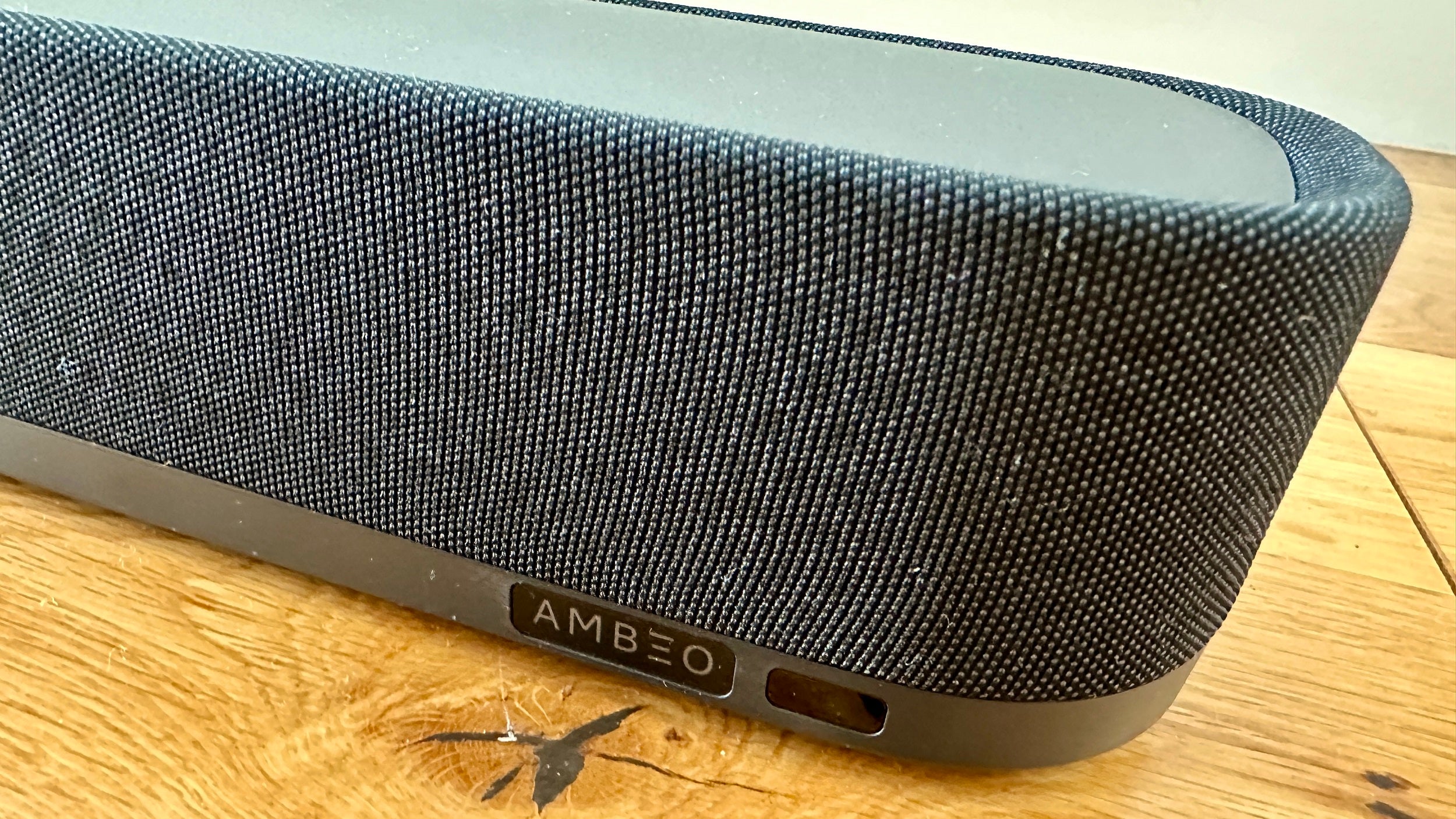Samsung HW-S61B Review
A compact soundbar at a cheaper price than you might expect
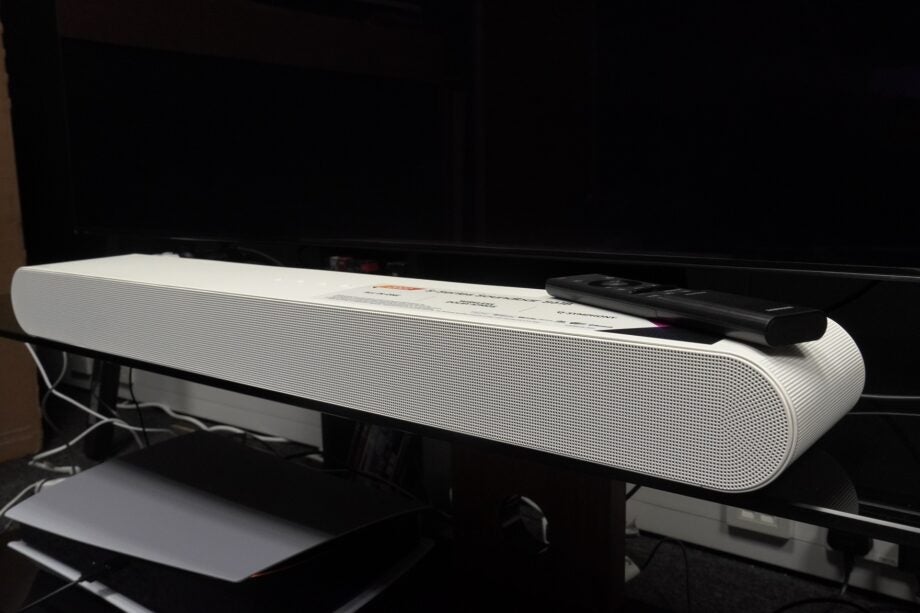

Verdict
A compact soundbar with a sharp, detailed, and punchy attitude to its delivery, at its current price this is a super option for those looking to upgrade their TV’s audio, though those with compatible Samsung TVs will get more value from it.
Pros
- Sharp, clear and spacious sound
- Small footprint
- Affordable at its current price
- Wall-mount brackets included
Cons
- LED menu is practically invisible from a seated position
- No HDMI eARC
Availability
- UKRRP: £329
- USARRP: $349
- EuropeRRP: €419
- CanadaRRP: CA$499
- AustraliaRRP: AU$599
Key Features
- All-in-oneCentre channel and integrated subwoofer
- Wireless Dolby AtmosWireless plays Dolby Atmos with compatible Atmos TV
- Q SymphonyCombines with compatible Samsung TVs to produce a bigger, expansive soundstage
Introduction
It’s said imitation is the sincerest form of flattery – but would you call Samsung’s dogged pursuit of Sonos in the compact soundbar market an act of flattery, or an attempt to depose the Californian company?
Samsung has had two attempts to dethrone the compact soundbar champ in the S61A and S60T, and with each attempt it’s gotten closer and closer.
With the S61B the lifestyle aesthetic has been ditched, while Dolby Atmos (and DTS Virtual:X) added along with features Sonos doesn’t (and can’t) support, such as wireless Atmos and Samsung’s Q Symphony tech.
With the HW-S61B, Samsung is looking to usurp Sonos at its own game.
Design
- Small footprint
- Puzzling LED menu
- No HDMI eARC
The Sonos soundbar the S61B looks like is not the Gen 2 Beam but a larger version of the Ray with its rounded edges, a grille that covers the entirety of its front and similar white and black finishes (the S60B is the black version of the S61B).
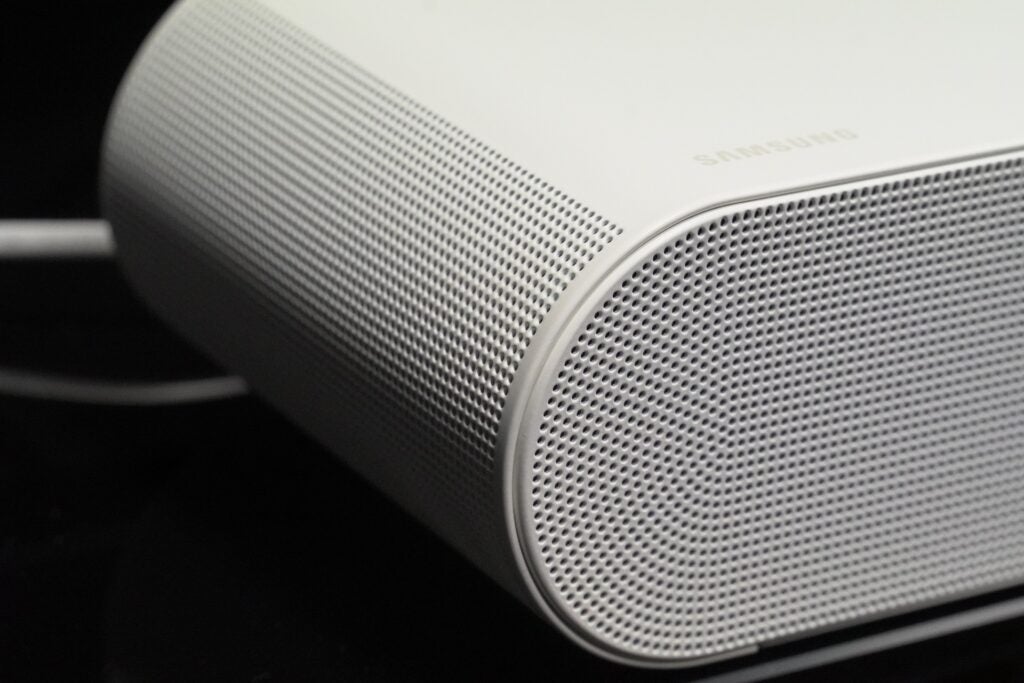
At 670 x 62 x 105mm (WHD) it’s a shade bigger than the Beam 2 in width and depth (but not as tall). Regardless, its size makes it easy to slip beneath most TVs and its footprint is small enough that it should be comfortably accommodated on the same piece of AV furniture your TV sits on. There’s no need to stump for a wall-mount bracket as the fixings and screws are included as standard.
The S61B suffers from the same issue as the S800B with its LED menu system. Made up of five LEDs sitting (somewhere) in the middle of the bar’s grille, it’s tricky to see them from a standard seating position, an issue compounded by the bar’s white finish.
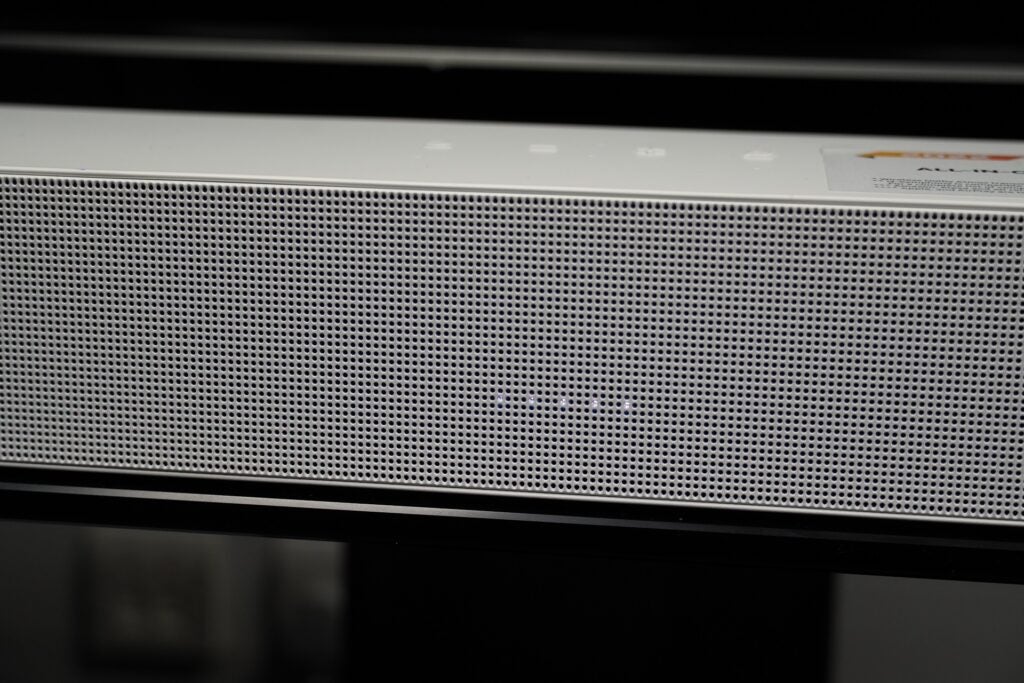
On top are playback/power, volume, and microphone buttons for operation in case the remote goes missing. The control apes Samsung’s smart TV remotes in its elegantly slim appearance and it’s simple enough to operate with volume rockers for the main unit and subwoofer (should you choose to add a Samsung model to your set-up).
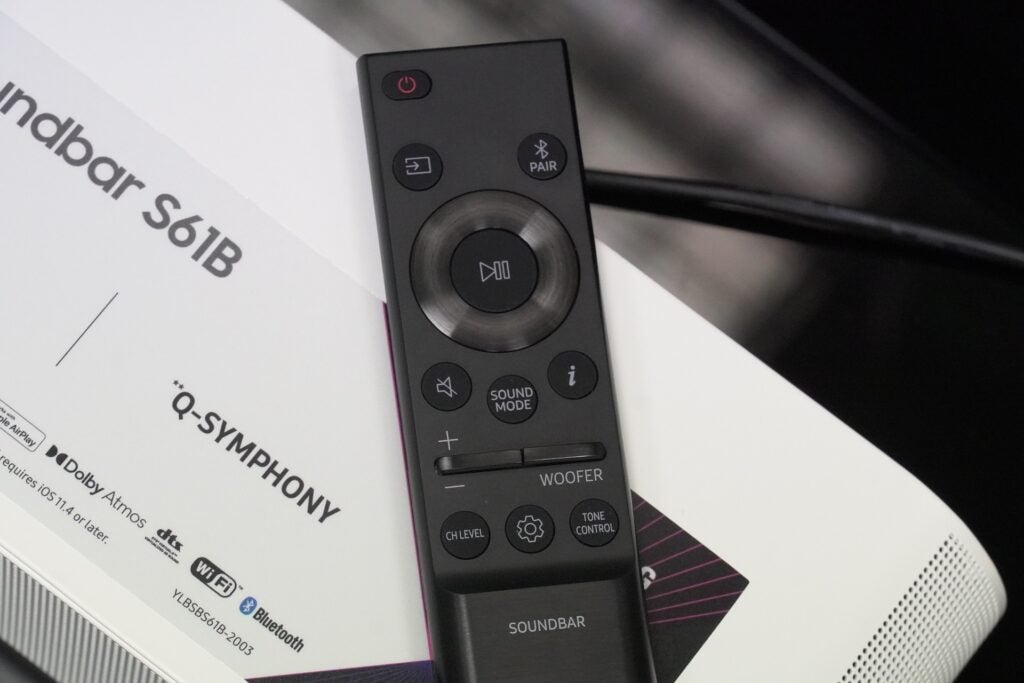
Housed in a recessed area are HDMI ARC and digital optical connections. The presence of ARC is a slight disappointment considering other bars of its ilk in the Beam 2, Bose Smart Soundbar 600 and Denon Home 550 all boast eARC for higher quality lossless Atmos playback. It’s the first marker this bar’s intentions aren’t necessarily with home cinema set-ups foremost in mind, built with streaming as its raison d’être.
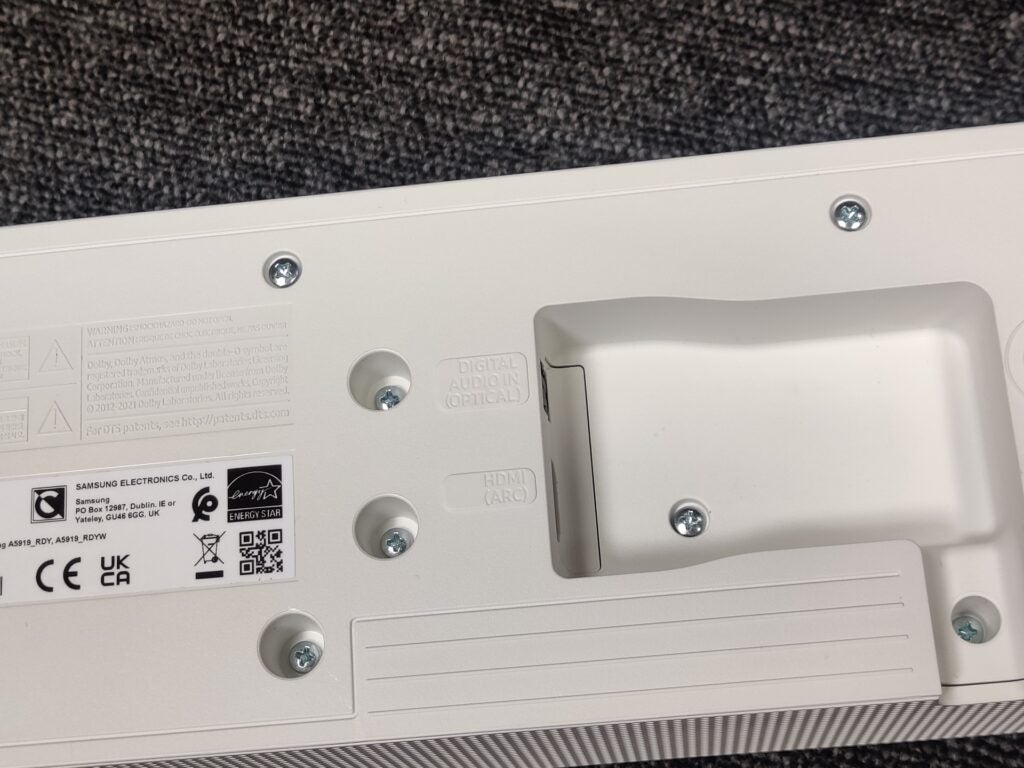
Features
- Atmos and DTS Virtual:X support
- Alexa voice control
- Upgrade path with rear speaker system
The S61B covers similar ground as the S60A and a little more. What’s new is support for wireless Dolby Atmos with a compatible Samsung TV, allowing Atmos tracks to be beamed to the soundbar without having to rely on a cable.
There is Alexa support though I’m still confused as to which version. Samsung says Alexa is built-in, but the website says it’s the ‘Works with’ version that requires another Alexa device to utter voice commands to. Whatever the case, having signed into Alexa my requests to the bar have been met with a chilly reception. The bar also has Hey Google support to control it with your voice by connecting a Google Assistant-enabled device.
For music there’s AirPlay 2 for streaming from iOS devices, Chromecast (although, again, the Samsung website says otherwise), Spotify Connect (which can be enabled in the SmartThings app) and Bluetooth. If you have a Samsung Galaxy smartphone at your disposal, a tap on the bar can send music straight from the phone to the S61B.
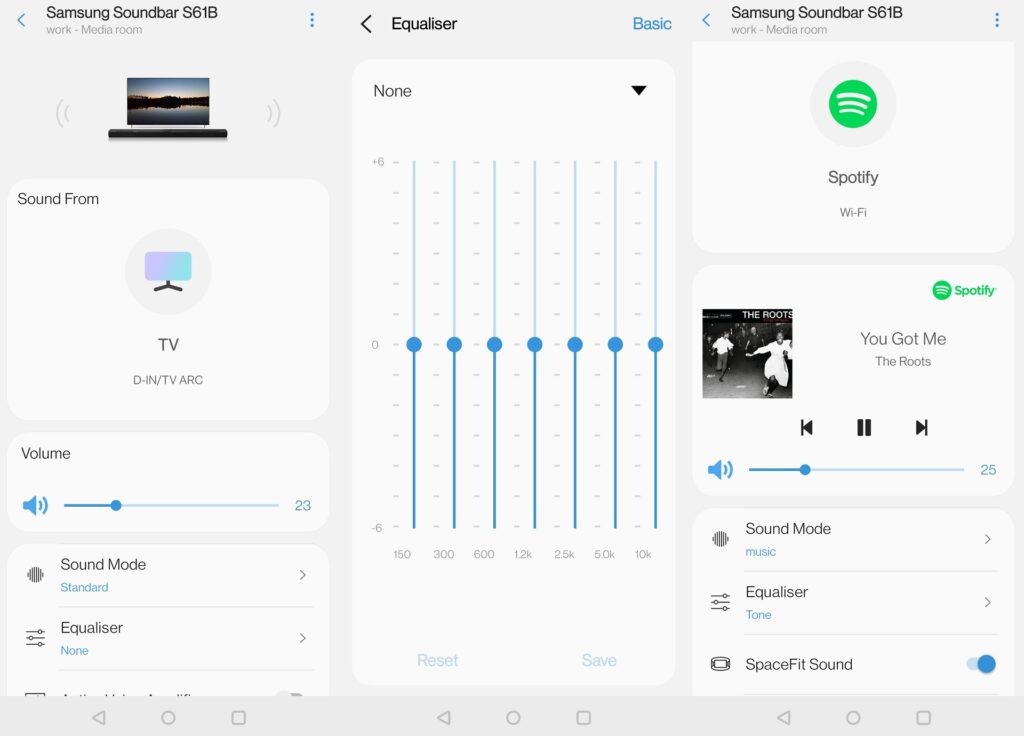
With its support for SmartThings it offers a quick means of setting the bar up and connecting to the Wi-Fi network, with playback controls, equaliser settings, sound modes and Samsung’s SpaceFit mode present. SpaceFit uses the bar’s microphones to optimise the performance and compensate for the acoustics of the room.
If at a later date there’s a wish to build a bigger sound system, there’s the option of adding SWA-9200S wireless rear speakers to the HW-S61B. At the time of review, they were priced at $149.99 / £199.99.
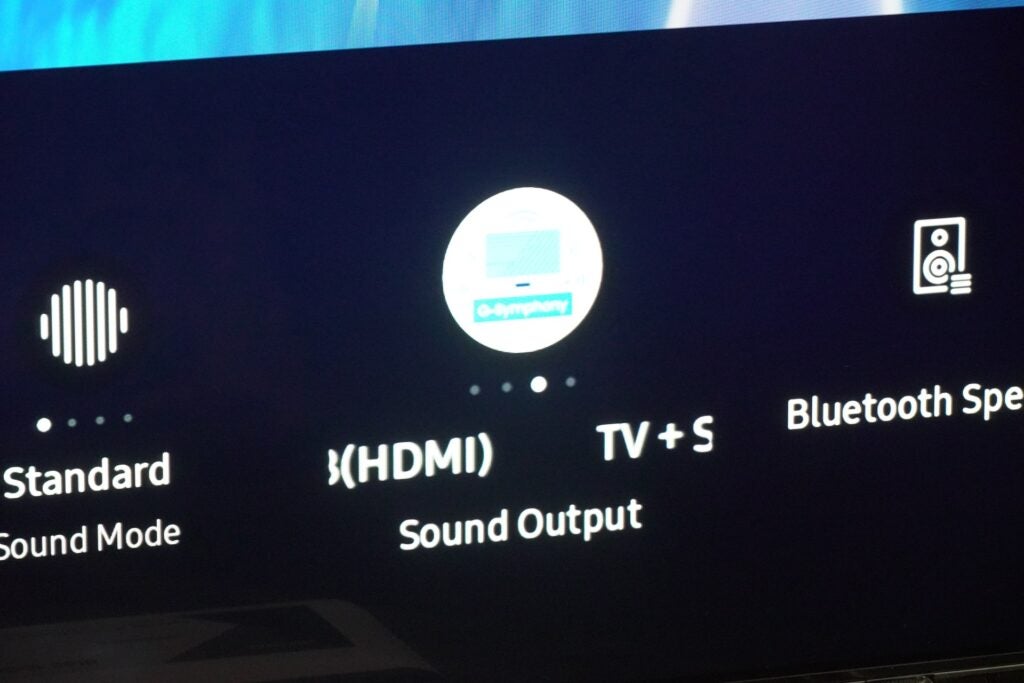
For those with compatible Samsung TVs, Q Symphony hands over some of the action from the bar to the TV with effects matching their placement on the screen as well as a wider, taller soundstage evoked. Enable Active Voice Amplifier and the S61B will raise dialogue above other noises it senses in a room, so conversations in TV shows and films can always be heard.
Sound Quality
- Clear, sharp and punchy sound
- Spacious with Atmos and DTS tracks
- Good at preserving dialogue
Crisp, clear and punchy are all words to describe the S61B’s performance, and you can add detailed and spacious to that list too. The S61B is a bar with plenty of energy and attack, a definite increase in scale and power compared to a TV.
High frequencies are detailed and sharp, producing a nice, bright quality to the top end of the frequency range, while the S61B radiates a punchy attitude to low frequencies, and though the integrated subwoofer is unsurprisingly lacking in bass extension, its punchiness is assertive, adding impact to scenes that require it.
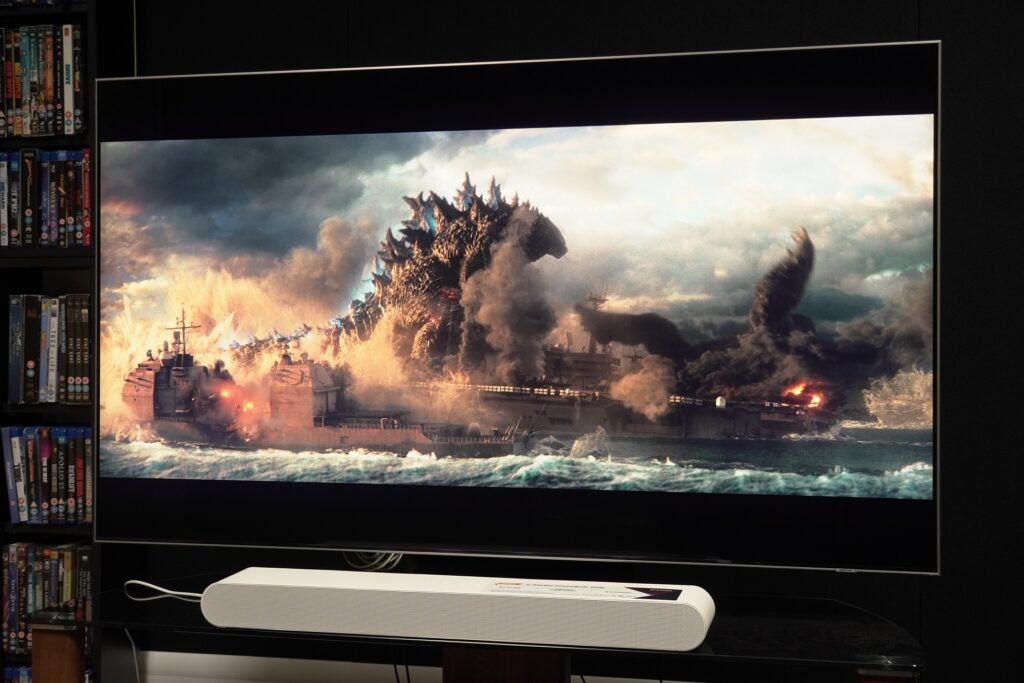
It can play Dolby Atmos and DTS Virtual:X, the latter option available in the settings when in its ‘HDMI’ mode (it won’t pop up if you’re using Q-Symphony). Wireless Atmos is also provided with compatible sets, though I didn’t get the chance to test this as the bar wouldn’t connect despite several attempts.
With The Tomorrow War on Prime Video in Atmos there’s lots of power and a razor-sharp sense of dynamism as the conscripts make their way through the portal to a future Miami; the scale of the soundstage is easily bigger than the width of the soundbar, stretching out to just beyond the edges of a 55-inch QN95B TV. Detail fizzes with energy during that sequence too, the crunch and crack of bones as people collide with buildings is wincingly conveyed.
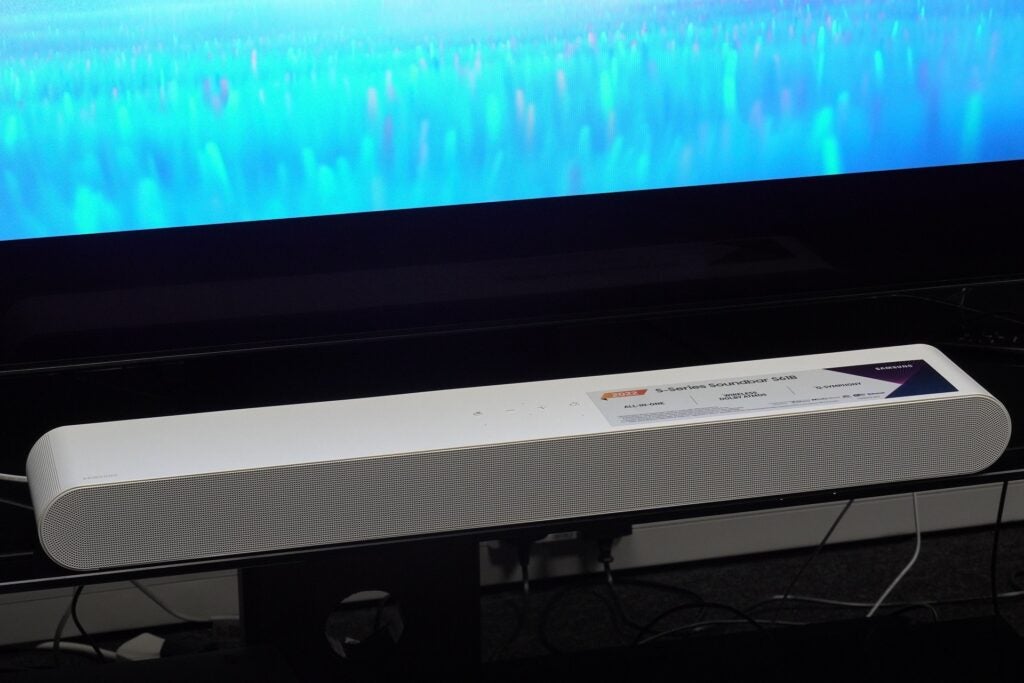
Dialogue is clear and positioned well on-screen, and most importantly characters sound as they should do – there’s no processing that mucks up the tone in this regard. For the majority of testing, I used the Voice Enhancement setting and I’d recommend having that on from the get-go – it helps the speaker’s centre channel project voices above the action better, and it does so without amplifying other sounds around voices, managing a better job than Samsung’s HW-S800B I tested around the same time.
Watching Scott Pilgrim vs the World (in Atmos) and the attributes the S61B showcased with The Tomorrow War are provided in ample amounts. It’s another dynamic, punchy and attacking listen, dynamically the bar goes from 0-60 like a race car; Knives’ ‘freak outs’ instantly grab my attention and the music performances littered throughout the film (We Are Sex Bob-omb, Garbage Track), are full of energy from the crashing cymbals, bass distortion and guitar riffs – it’s a lively, exciting performance.
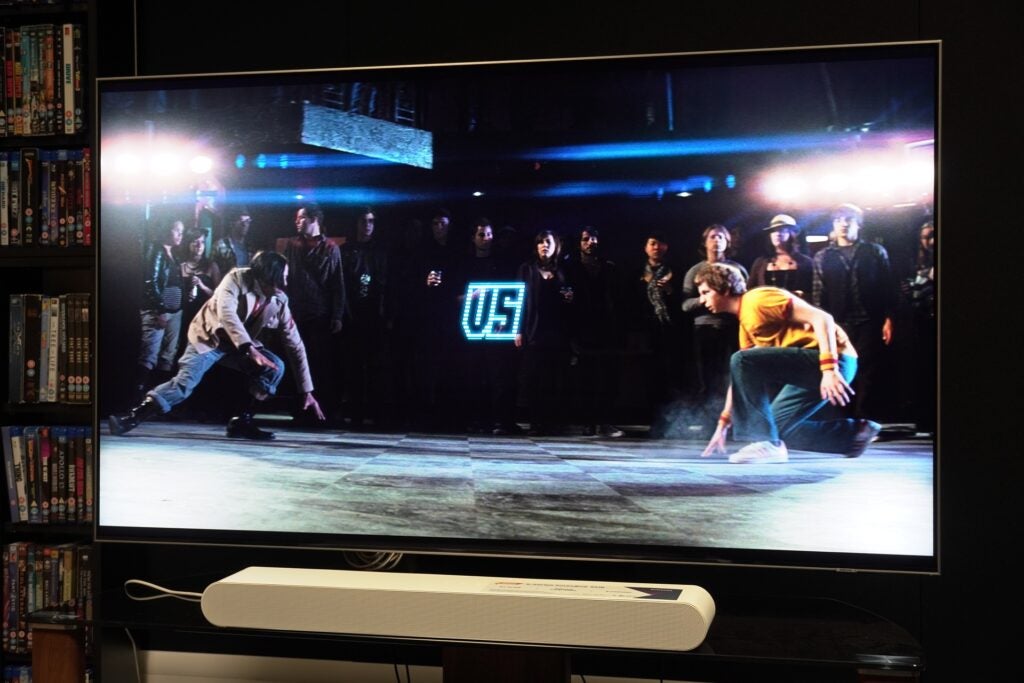
The fights are just as fluid and intense. Pilgrim’s fight against ‘evil ex no.1’ Matthew Patel is loud and exciting during the fisticuffs but nicely ramps down in the quiet moments such as the animated flashback. Where the HW-S61B perhaps suffers in comparison to the Sonos Beam Gen 2 is that there’s no sense of effects fired into the room. Q-Symphony support plants dialogue and effects with more authority on the screen, and the crossover between bar and TV is smoothly handled.
DTS tracks aren’t left behind, the DTS Virtual:X presentation of Steven Spielberg’s E.T., is wide, sharp and crisp, more expansive in scale compared to Standard and Adaptive modes. With Dialogue, the bar’s sense of detail is clearer and bigger and the bigger soundstage also allows other aspects of the sound mix more room to breathe – such as John Williams’ excellent score.
There is a ‘Music’ mode but the biggest difference you’ll hear will be down to the method of flinging tracks to the S61B. The Roots’ You Got Me fed over Spotify Connect is sharp and dynamic, the percussion is given plenty of kick and impact, and when engaged the Music mode puts more of a focus on Erikah Badu’s vocals.
With Bluetooth, the same track takes on a smoother tone, with less of a punch to low frequencies and more of a warm, rounded take on bass. It’s less dynamic, though still altogether listenable.
Latest deals
Should you buy it?
A compact bar or less than £350: None of Samsung’s main rivals has flirted with prices less than £350. The S61B is the cheapest of a high-quality bunch.
You hanker for some HDMI eARC: The HW-S61B supports HDMI ARC, which means the lossy, lesser quality version of Atmos/DTS. Sonos, Denon and Pol do offer eARC, although for considerably more money.
Final Thoughts
Given it is currently available for less than £350, this is an excellent compact soundbar and one well worth considering if you have a small Samsung TV to partner it with. It’ll elevate its performance massively.
No eARC means no lossless Dolby Atmos but if your concern is mainly streaming from the likes of Netflix, Disney+ and Prime Video, this soundbar will suit your habits to a tee. Add in decent smarts, a small footprint, and the opportunity to upgrade to a surround system later, and the HW-S61B is a tempting proposition.
How we test
We test every soundbar we review thoroughly over an extended period of time. We use industry standard tests to compare features properly. We’ll always tell you what we find. We never, ever, accept money to review a product.
Find out more about how we test in our ethics policy.
Tested for a month
Tested with film, games and music
Tested with real world use
FAQs
There’s no support for DTS’ immersive audio format on this bar, but there is Virtual:X support, which upmixes DTS audio into a more immersive, spatial audio mix.
Full specs
Sustainability
Trusted Reviews’ holds the fact that global warming is not a myth as a core value and will continuously endeavour to help protect our planet from harm in its business practices.
As part of this mission, whenever we review a product we send the company a series of questions to help us gauge and make transparent the impact the device has on the environment.
We currently haven’t received answers to the questions on this product, but will update this page the moment we do. You can see a detailed breakdown of the questions we ask and why in our sustainability info page.

